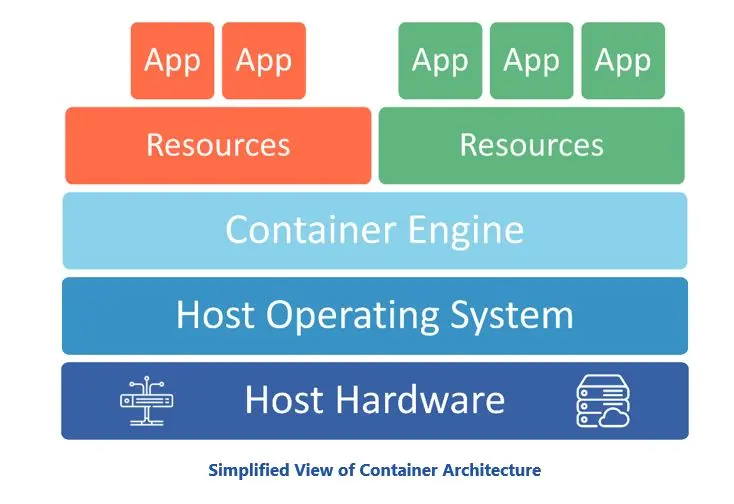

Keywords: Containers, Edge Compute, Internet of Things (IoT), Docker, Kubernetes, Cloud, Artificial Intelligence (AI), Machine Learning (ML), ARC Advisory Group.
Containers are a software technology that enables the packaging and deployment of applications and their dependencies in a self-contained unit, enhancing scalability and flexibility at the industrial edge.
Containers encapsulate the necessary software components, libraries, and configurations required to run an application. Unlike traditional virtualization technologies, containers do not require a separate operating system for each instance. Instead, they share the host system's operating system kernel, which results in reduced resource usage and simpler deployment. Container applications run independently without interfering with other containers or the host system. These qualities make containers an exciting prospect for rapidly growing industrial edge environments.
Containers work by leveraging containerization technologies, such as Docker and Kubernetes. The containerization process involves packaging an application along with its dependencies into a container “image.” This image can be deployed and executed on edge devices or edge servers. The container platform then provides the necessary runtime environment, networking capabilities, and resource management for the applications to run effectively.
Containers at the industrial edge enable the deployment of applications close to the data source, facilitating real-time data insights and powering emerging use cases such as edge AI. They can run on edge devices such as IoT gateways or be deployed on IPCs or edge servers that aggregate and process data from multiple devices.

Containers have the potential to unlock new opportunities for improving operations at the industrial edge. Some examples include:
Workload Consolidation. By encapsulating applications and their dependencies into containers, multiple workloads can coexist and run efficiently on a single edge device or server depending on need. This consolidation eliminates the need for dedicated hardware for each workload, resulting in reduced hardware requirements and associated costs. Containers provide isolation between applications, ensuring that they can operate independently and without interference on a single device.
Portability. With containerization, applications and their dependencies are bundled together into a self-contained unit that can run consistently and reliably regardless of the underlying infrastructure. This flexibility enables users to easily migrate applications between different edge devices, enhancing the agility of deployment.
Resource Efficiency. Compared with traditional virtualization technologies, containers have smaller resource overhead. This allows for more efficient usage of computing resources as more workloads can run concurrently without sacrificing performance or stability.
Scalability. Containerization enables industrial organizations to scale their applications based on demand, making it easier to replicate and distribute cloud-native application instances across multiple edge devices or servers. This distributed approach allows for workload balancing and optimized device utilization, ensuring efficient scaling without overwhelming specific parts of the infrastructure. Container orchestration platforms can dynamically adjust the number of container instances, allowing edge environments to adapt to changing demands in real time.
Fault Tolerance. Container platforms enhance fault tolerance by offering robust mechanisms for isolating and managing application failures. If a container fails, it can be easily restarted or replaced without affecting the operation of other containers or the entire edge infrastructure. Some container orchestration platforms can proactively respond to container failures by restarting them or moving them to healthy edge devices, ensuring continuous operation and reducing potential downtime.
ARC Advisory Group clients can view the complete report at the ARC Client Portal.
Please Contact Us if you would like to speak with the author.
Obtain more ARC In-depth Research at Market Analysis

